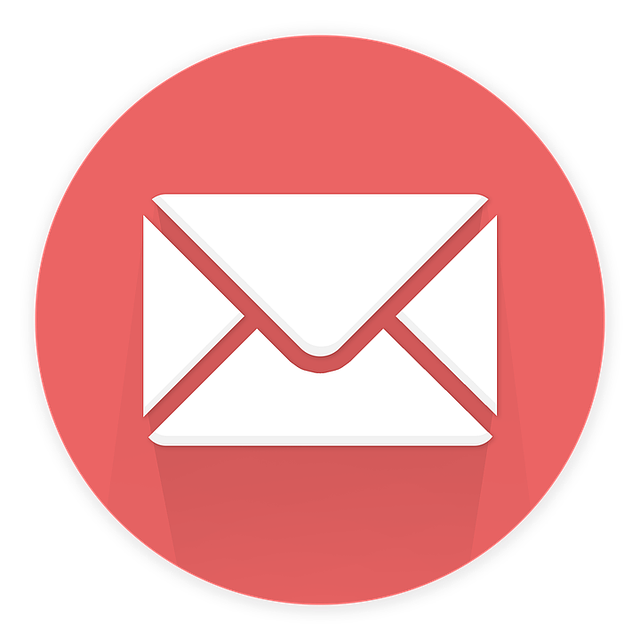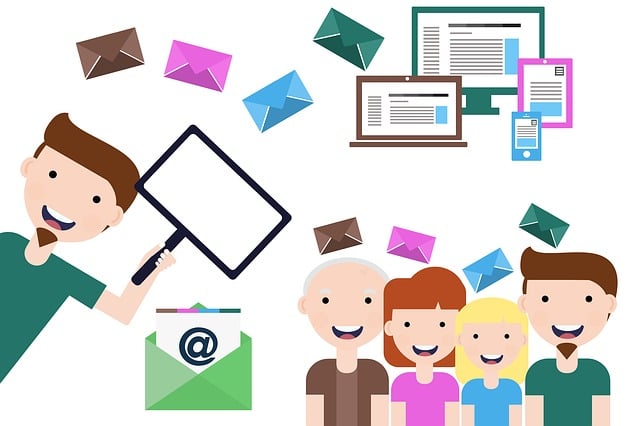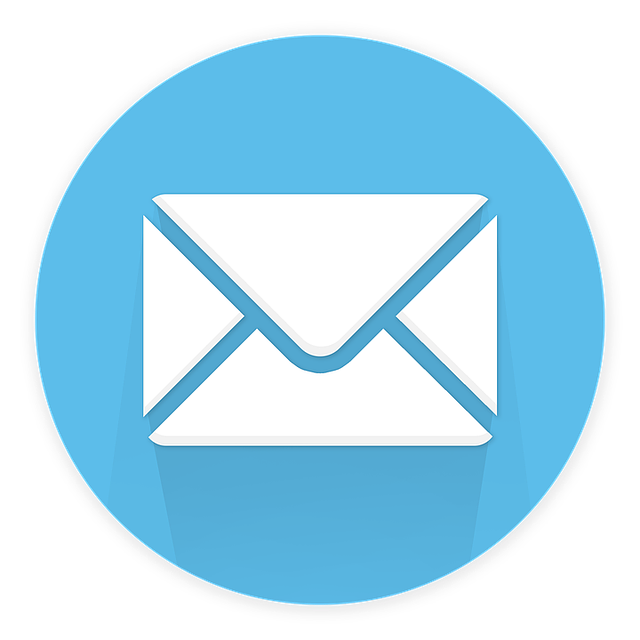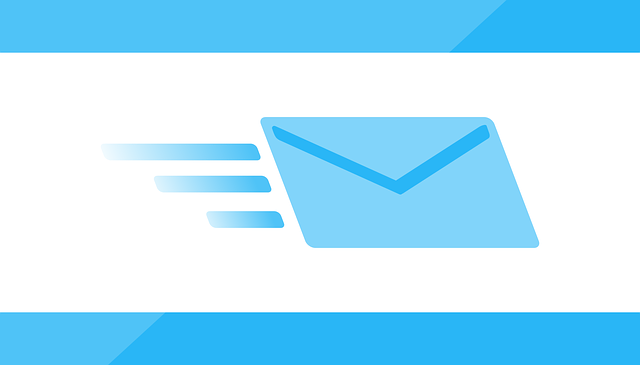Are you tired of manually sending out emails and struggling to keep up with the demands of your SaaS company’s marketing efforts? Look no further! We have the ultimate solution to streamline your email marketing process and take your business to new heights.
Introducing our complete guide to email marketing automation for SaaS companies.
With this guide, you will discover the power of automation and how it can revolutionize your marketing efforts. Say goodbye to the tedious task of individually crafting and sending emails – our guide will show you how to automate your email campaigns, saving you time and energy.
But that’s not all!
We’ll also help you:
- Choose the right email marketing automation platform
- Set up effective automated email campaigns
- Implement winning email marketing strategies
- Analyze and optimize your results
Plus, we’ll share best practices that have been proven to drive success for SaaS companies.
Get ready to take your SaaS business to the next level with our complete guide to email marketing automation. It’s time to revolutionize your marketing efforts and achieve unparalleled success!
Key Takeaways
- Email marketing automation is a powerful tool for SaaS companies to streamline their email marketing process and save time and energy.
- It offers several benefits, including nurturing leads, boosting customer engagement, and increasing revenue by delivering personalized and targeted messages to the audience.
- Choosing the right email marketing automation platform involves considering features, integration options, pricing, scalability, data security, and compliance.
- Implementing effective automated email campaigns requires implementing winning strategies, measuring success through key metrics, segmenting the audience, and constantly analyzing and optimizing for better results.
Understanding the Benefits of Email Marketing Automation for SaaS Companies
Email marketing automation offers a plethora of advantages for SaaS companies. It allows you to effortlessly nurture leads, boost customer engagement, and skyrocket revenue, all while saving valuable time and resources. By automating your email campaigns, you can deliver personalized and targeted messages to your audience, increasing the chances of conversion and customer retention.
Additionally, email automation enables you to segment your audience based on specific criteria, ensuring that each recipient receives relevant content. It also allows you to measure the effectiveness of your campaigns through analytics and metrics, providing valuable insights into customer behavior and preferences.
However, there are challenges to consider, such as maintaining a balance between automation and personalization and avoiding the risk of appearing spammy. With the right email marketing automation platform, you can overcome these challenges and achieve optimal results in your SaaS marketing efforts.
Choosing the Right Email Marketing Automation Platform
When it comes to choosing the right email marketing automation platform for your SaaS company, there are a few key points to consider.
Firstly, you need to evaluate the features and integration options that the platform offers. This will ensure that it aligns with your specific needs and can seamlessly integrate with your existing systems.
Additionally, it’s important to consider pricing and scalability, as you want a platform that can grow with your business and offers competitive pricing.
Lastly, don’t forget to prioritize data security and compliance to protect your customers’ information and ensure you meet all necessary regulations.
Evaluating Features and Integration Options
One interesting statistic to consider is that 63% of SaaS companies find that seamless integration with their existing systems is a crucial feature when evaluating email marketing automation options. It is essential to choose a platform that offers a wide range of features and integration options to meet your specific needs. When comparing features, consider factors such as segmentation capabilities, A/B testing, and personalization options. Integration options should include popular CRM platforms like Salesforce and HubSpot, as well as other tools your company relies on, such as analytics software or e-commerce platforms. To help you visualize the different options available, here is a table comparing some key features and integration options:
| Feature | Integration Options |
|---|---|
| Segmentation capabilities | Salesforce, HubSpot, Google Analytics |
| A/B testing | Mailchimp, Marketo, Shopify |
| Personalization options | Pardot, Magento, WooCommerce |
Considering pricing and scalability is the next step in finding the right email marketing automation platform for your SaaS company.
Considering Pricing and Scalability
To find the perfect email marketing automation platform for your SaaS company, you need to consider your pricing and scalability options.
Pricing is an important factor to consider as it directly impacts your budget and ROI. Look for a platform that offers flexible pricing plans, allowing you to scale up or down as your business needs change.
Scalability is equally important, as your email marketing needs may grow as your customer base expands. Choose a platform that can handle increasing volumes of emails without compromising performance.
By investing in the right platform, you can effectively onboard new customers and maximize their lifetime value. To achieve this, prioritize a platform that offers robust customer onboarding features and strategies.
Next, ensure data security and compliance by selecting a platform that prioritizes these aspects.
Ensuring Data Security and Compliance
Make sure your data is secure and compliant by choosing a platform that prioritizes data security and compliance. When it comes to email marketing automation for SAAS companies, data privacy and regulatory compliance should be at the top of your priority list.
Look for a platform that offers robust security measures, such as encryption and secure data storage, to protect your customer’s sensitive information. Additionally, ensure that the platform complies with relevant regulations, such as GDPR or CCPA, to avoid any legal complications.
By selecting a platform that takes data security and compliance seriously, you can rest assured that your customer’s data is safe and your business is following all necessary regulations. With this peace of mind, you can focus on setting up automated email campaigns that drive engagement and conversions.
Setting Up Automated Email Campaigns
When setting up automated email campaigns, imagine your customer journey as a well-orchestrated symphony, where each email serves as a harmonious note leading your subscribers closer to conversion. To ensure the success of your campaigns, follow these key steps:
-
Measure the effectiveness: Track open rates, click-through rates, and conversion rates to gauge the impact of your emails. Use this data to optimize your campaigns and improve future results.
-
Personalize email campaigns: Tailor your messages to each subscriber’s preferences, demographics, and behavior. Segment your audience based on these factors to deliver relevant content that resonates with them.
-
Automate trigger-based emails: Set up automated emails triggered by specific actions or events, such as welcome emails, cart abandonment reminders, or re-engagement emails. These timely messages can nurture leads and drive conversions.
-
Test and optimize: Continuously test different email elements, such as subject lines, call-to-action buttons, and content layout. Use A/B testing to identify what resonates best with your audience and refine your campaigns accordingly.
By implementing these strategies, you can maximize the effectiveness of your automated email campaigns and drive successful conversions.
Transitioning into the next section, let’s explore how to implement effective email marketing strategies.
Implementing Effective Email Marketing Strategies
Now that we’ve covered setting up automated email campaigns, let’s dive into implementing effective strategies to enhance your email marketing efforts. Measuring the success of your email marketing campaigns is crucial to understanding what works and what doesn’t. By tracking key metrics such as open rates, click-through rates, and conversion rates, you can make data-driven decisions to optimize your campaigns. Segmenting your audience is another vital strategy to ensure that your emails are relevant and personalized. By dividing your subscribers into different groups based on demographics, behavior, or preferences, you can send targeted messages that resonate with each segment. This increases engagement and improves the overall effectiveness of your campaigns. In the table below, you’ll find some effective email marketing strategies to consider:
| Strategy | Description | Benefits |
|---|---|---|
| Personalization | Tailor emails to individual subscribers | Higher engagement |
| A/B Testing | Test different elements to optimize campaigns | Improved performance |
| Drip Campaigns | Send a series of emails over a set period | Nurture leads |
| Cart Abandonment Emails | Remind customers of items left in their shopping cart | Increased conversions |
| Welcome Series | Introduce new subscribers to your brand | Build customer loyalty |
In the next section, we’ll discuss analyzing and optimizing your email marketing automation to ensure continuous improvement and success.
Analyzing and Optimizing Your Email Marketing Automation
Once you’ve set up your automated email campaigns, it’s time to analyze and optimize your strategy for continuous improvement and success. To do this, you need to analyze your campaign performance and identify areas for improvement.
Look at open rates, click-through rates, and conversion rates to see what’s working and what isn’t. Use A/B testing to experiment with different subject lines, content, and CTAs to optimize your emails for maximum engagement.
Additionally, focus on improving email deliverability by monitoring your sender reputation, using a reputable email service provider, and regularly cleaning your email list.
By constantly analyzing and optimizing your email marketing automation, you can maximize your campaign’s effectiveness and drive better results for your SaaS company.
Moving forward, let’s explore the best practices for successful email marketing automation for SaaS companies.
Best Practices for Successful Email Marketing Automation for SaaS Companies
To truly excel in the world of digital marketing, you need to embrace the art of automating your email campaigns for SaaS success.
One of the key factors in achieving success with email marketing automation is improving email deliverability. Make sure your emails reach the intended recipients by regularly monitoring your email deliverability rates and taking necessary actions to maintain a good sender reputation.
Additionally, personalization techniques are essential for effective email marketing automation. Tailor your emails to each individual recipient by using their name, segmenting your audience based on their preferences, and sending targeted content that resonates with their needs and interests.
By implementing these best practices, you can maximize the impact of your email marketing automation and drive success for your SaaS company.
Frequently Asked Questions
How can I ensure that my automated email campaigns are delivered to the right audience?
To ensure your automated email campaigns are delivered to the right audience, employ effective targeting strategies. Segment your email lists based on demographics, behavior, and preferences. Personalize your messages to resonate with each segment.
Additionally, focus on improving email deliverability by maintaining a clean email list, using double opt-ins, and regularly monitoring bounce rates. By implementing these tactics, you can maximize the effectiveness of your email campaigns and reach the right people at the right time.
What are some common mistakes to avoid when setting up automated email campaigns?
Avoiding common pitfalls is crucial when setting up your automated email campaigns. One common mistake is not segmenting your audience properly, resulting in irrelevant content being sent.
Another pitfall is neglecting to personalize your emails, causing recipients to lose interest.
Additionally, failing to test your emails before sending can lead to formatting issues and broken links.
To avoid these mistakes, follow best practices such as segmenting your audience based on their interests and behavior, personalizing your emails, and thoroughly testing before sending.
How can I personalize my automated emails to increase engagement and conversions?
To increase engagement and conversions, use personalization techniques in your automated emails. Start by addressing your recipients by their first name and tailor the content to their preferences or past interactions.
Segment your audience based on demographics or behavior to send more targeted emails. Use dynamic content to insert personalized elements like product recommendations or unique discount codes.
By implementing these best practices for email automation, you’ll create a more personalized and effective email marketing strategy.
What metrics should I track and analyze to measure the success of my email marketing automation efforts?
To measure the success of your email marketing automation efforts, you should track and analyze key metrics. These metrics include open rates, click-through rates, conversion rates, and unsubscribe rates.
Tracking and analyzing these metrics will give you insights into the effectiveness of your campaigns. It will also help you identify areas for improvement. By monitoring these metrics, you can make data-driven decisions and implement effective strategies for email marketing automation.
Are there any legal considerations or regulations that SaaS companies need to be aware of when implementing email marketing automation?
Legal considerations and regulations are just a bunch of fun obstacles standing in your way when it comes to implementing email marketing automation for your SaaS company. But fear not, dear reader, because compliance with GDPR is a crucial step to avoid hefty fines and maintain your customers’ trust.
Make sure you’re familiar with the rules and take the necessary steps to ensure your email marketing efforts are GDPR compliant. It’s the responsible thing to do, after all.
Conclusion
In conclusion, you now have a complete guide to email marketing automation for your SaaS company. By understanding the benefits and choosing the right platform, you can set up automated campaigns. Implement effective strategies and analyze and optimize your efforts to achieve success. Remember, automation isn’t just a trend, it’s a necessity. So don’t wait any longer, start implementing these best practices and watch your email marketing thrive. You’ve got this!








